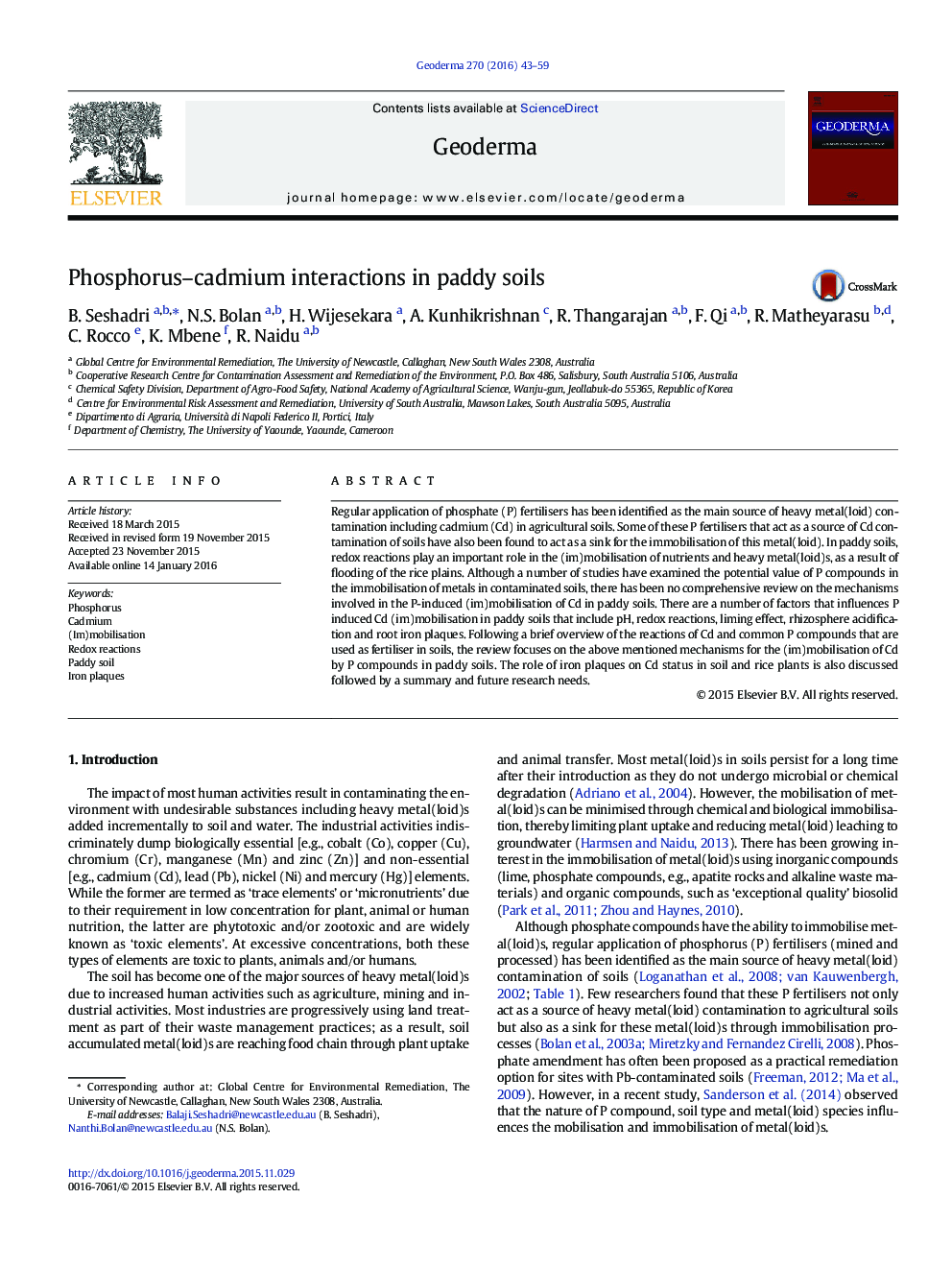| Article ID | Journal | Published Year | Pages | File Type |
|---|---|---|---|---|
| 4572956 | Geoderma | 2016 | 17 Pages |
•Regular application of P fertilisers provides a major source of Cd input to soils.•P fertilisers can immobilise Cd in soils, thereby reducing its bioavailability.•P fertilisers can mobilise Cd through rhizosphere acidification.•In paddy soils, redox reactions impact the (im)mobilisation of P and Cd.•Iron plaque on rice roots impacts P–Cd interaction in relation to bioavailability.
Regular application of phosphate (P) fertilisers has been identified as the main source of heavy metal(loid) contamination including cadmium (Cd) in agricultural soils. Some of these P fertilisers that act as a source of Cd contamination of soils have also been found to act as a sink for the immobilisation of this metal(loid). In paddy soils, redox reactions play an important role in the (im)mobilisation of nutrients and heavy metal(loid)s, as a result of flooding of the rice plains. Although a number of studies have examined the potential value of P compounds in the immobilisation of metals in contaminated soils, there has been no comprehensive review on the mechanisms involved in the P-induced (im)mobilisation of Cd in paddy soils. There are a number of factors that influences P induced Cd (im)mobilisation in paddy soils that include pH, redox reactions, liming effect, rhizosphere acidification and root iron plaques. Following a brief overview of the reactions of Cd and common P compounds that are used as fertiliser in soils, the review focuses on the above mentioned mechanisms for the (im)mobilisation of Cd by P compounds in paddy soils. The role of iron plaques on Cd status in soil and rice plants is also discussed followed by a summary and future research needs.
Graphical abstractFigure optionsDownload full-size imageDownload as PowerPoint slide
